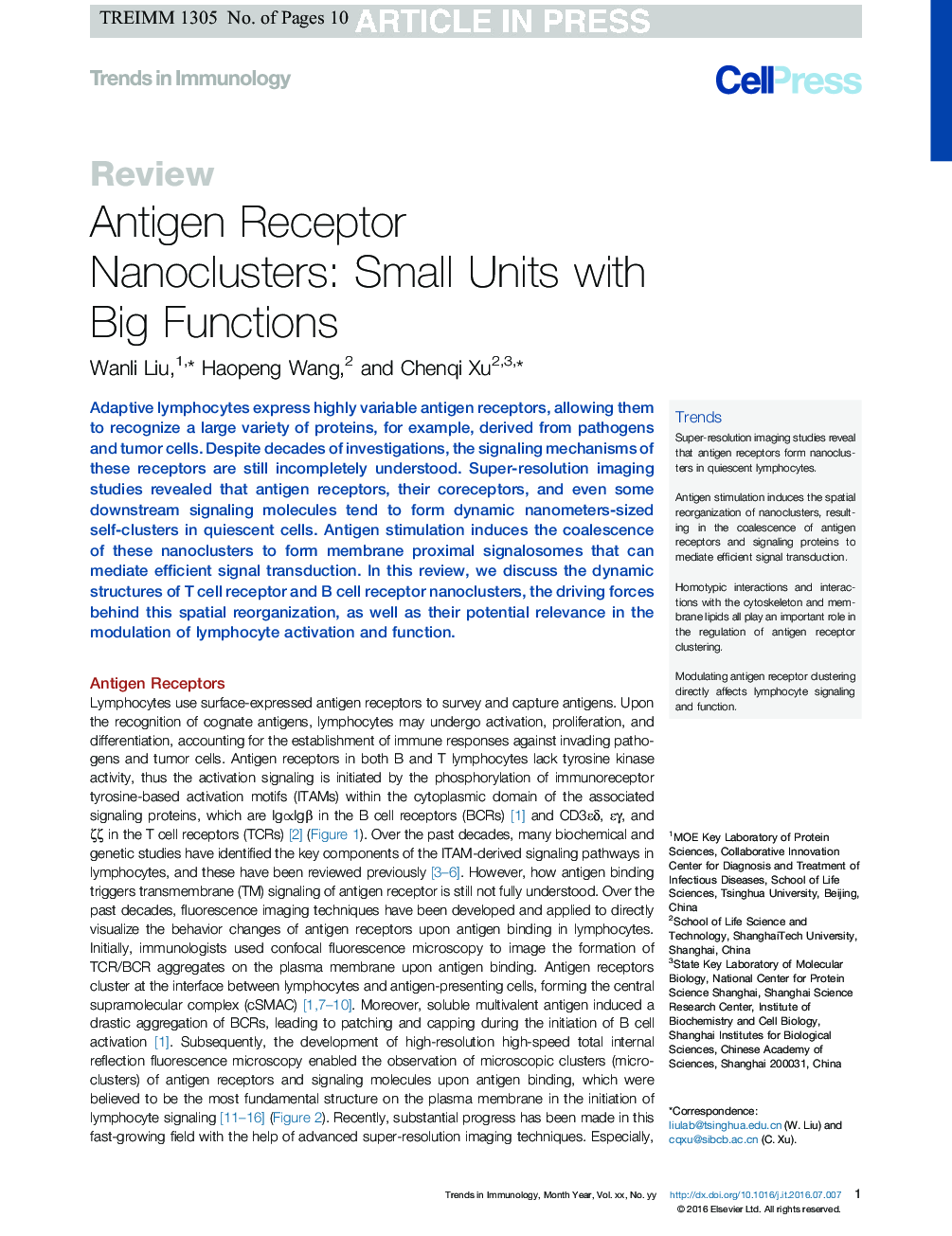| Article ID | Journal | Published Year | Pages | File Type |
|---|---|---|---|---|
| 5739882 | Trends in Immunology | 2016 | 10 Pages |
Abstract
Adaptive lymphocytes express highly variable antigen receptors, allowing them to recognize a large variety of proteins, for example, derived from pathogens and tumor cells. Despite decades of investigations, the signaling mechanisms of these receptors are still incompletely understood. Super-resolution imaging studies revealed that antigen receptors, their coreceptors, and even some downstream signaling molecules tend to form dynamic nanometers-sized self-clusters in quiescent cells. Antigen stimulation induces the coalescence of these nanoclusters to form membrane proximal signalosomes that can mediate efficient signal transduction. In this review, we discuss the dynamic structures of T cell receptor and B cell receptor nanoclusters, the driving forces behind this spatial reorganization, as well as their potential relevance in the modulation of lymphocyte activation and function.
Related Topics
Life Sciences
Immunology and Microbiology
Immunology
Authors
Wanli Liu, Haopeng Wang, Chenqi Xu,
